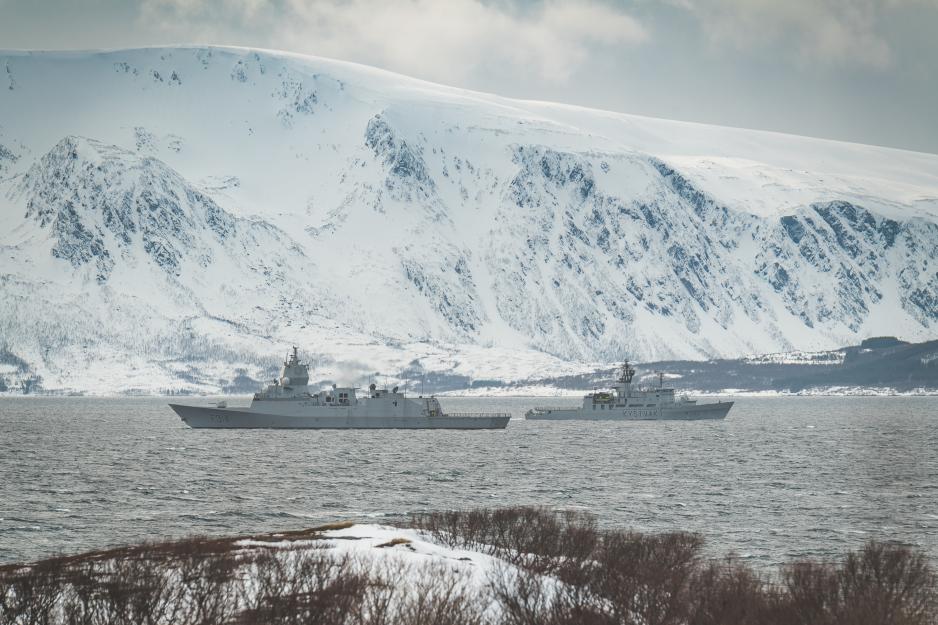


Commercial satellite imagery taken in recent weeks shows significant activity at the Pankovo test site on Novaya Zemlya, the Arctic archipelago long used for weapons trials.
Jeffrey Lewis of the Middlebury Institute of International Studies and Decker Eveleth of CNA reached their assessments separately after reviewing Planet Labs imagery. They identified increased movements of personnel and equipment, as well as ships and specialist aircraft previously linked to Burevestnik trials. A Western security source, speaking on background, also said preparations for a test were under way.
Lewis said a launch could occur this week. The observed build-up includes stacks of containers, a crane at the launch position, and aircraft equipped to collect test data parked at Rogachevo airfield. At least five vessels associated with earlier campaigns are present in surrounding waters, with ship-tracking indicating further arrivals.
The Burevestnik—known to NATO as the SSC-X-9 Skyfall—has been described by President Putin as “invincible” to current and future missile defences, with an effectively unlimited range and an unpredictable flight profile due to its nuclear propulsion. Analysts note that Moscow has attached greater importance to systems designed to circumvent US defences since the announcement of Washington’s new “Golden Dome” concept.
The Golden Dome initiative was set out in a January executive action and subsequently amplified by the Pentagon. Planning documents describe a multi-layered shield combining space-based sensors or interceptors with ground-based elements and existing systems such as THAAD and Patriot. Industry briefings this week pointed to a prospective new interceptor field in the US Midwest alongside upgrades in Alaska and California.
Despite Moscow’s claims, Burevestnik’s test history is limited. The Nuclear Threat Initiative (NTI) has assessed that, since 2016, the programme has logged at least 13 known attempts with two partial successes. Open-source reporting has also recorded earlier mishaps, including a 2019 incident linked by Western experts to reactor testing. While Russia asserts the missile can evade defences, specialists question whether it offers capabilities beyond existing strategic forces and point to environmental risks from a nuclear propulsion unit.
The timing places any potential launch close to the Trump–Putin meeting in Alaska on Friday. Researchers and arms-control figures quoted in US media said test windows are typically scheduled well in advance, though such activities can be accelerated or paused for political reasons. Norway’s military has described the Barents Sea as a regular venue for Russian missile tests and noted current maritime notices consistent with preparations, while US aviation advisories indicate a possible launch window through late August.
Separately, analysts say any demonstration of novel long-range systems will form part of a wider strategic backdrop. New START—the last treaty limiting US and Russian deployed strategic nuclear forces—remains in effect but is due to expire on 5 February 2026 after a one-time extension. Russia has suspended participation, and substantive talks on a successor arrangement have not begun, according to specialist monitoring groups.
If a Burevestnik launch proceeds this week, it would underline Moscow’s continued investment in long-range, defence-evading systems even as it signals readiness for direct talks with Washington. Equally, a halt visible to US satellites would have been an available gesture before the Alaska meeting, analysts noted. For now, satellite imagery points to active preparations at Pankovo, with a test possible within the declared maritime and aviation warning periods.
Knyaz Pozharsky: Russia’s Newest Nuclear Submarine Targets Strategic Deterrence in the Arctic
You must be logged in to post a comment.
Russia’s latest mass strike on Kyiv tests the meaning of Washington’s rhetorical shift